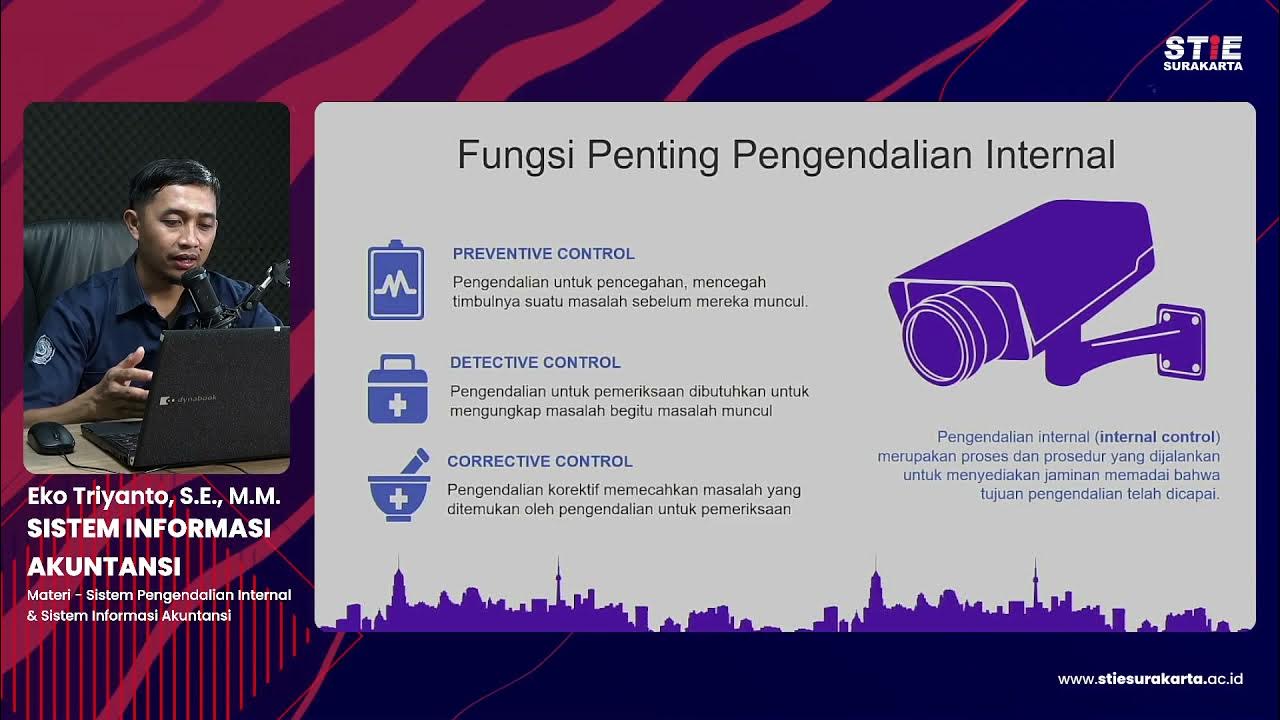Data Classification and Categorization
Summary
TLDRThis lesson focuses on assessing information assets through classification and categorization to enable effective security and risk assessments. Classification evaluates the sensitivity of data, helping organizations apply the proper controls to prevent unauthorized access. Common classification levels include confidential, sensitive, private, proprietary, and public, each with varying impacts on business. Categorization, based on federal standards (FIPS 199), helps assign a value and risk tolerance to assets. Both processes are crucial for assessing risks and determining the necessary security measures for data and systems, supporting critical business operations.
Takeaways
- 😀 Classification and categorization are essential for assessing information assets and determining security and risk priorities.
- 😀 Classification helps assess the sensitivity of data and apply appropriate controls to prevent unauthorized access, improper retention, and unsafe destruction.
- 😀 Common classification labels include confidential, sensitive, private, proprietary, and public, with 'confidential' being the most sensitive.
- 😀 Data classified as 'confidential' is typically subject to legal regulations, and its breach may result in severe business impact (e.g., ePHI, PII).
- 😀 'Sensitive' data carries a lower risk than confidential data, but a breach can cause significant business impact, particularly reputation damage.
- 😀 'Private' data has minimal business impact if lost but should still be kept confidential, such as employee data or product information.
- 😀 'Proprietary' data may be disclosed outside the organization under controlled conditions, and procedures should manage its release.
- 😀 'Public' data is the least sensitive and losing it has little to no business impact.
- 😀 Categorization assigns a value to each asset and helps determine the organization’s risk tolerance for each data set and system.
- 😀 FIPS 199 categorizes data and systems into low, medium, or high based on their confidentiality, integrity, and availability (CIA).
- 😀 The impact of data loss in terms of confidentiality, integrity, or availability determines the categorization level—higher risk equals higher category.
- 😀 Both classification and categorization are necessary for performing risk assessments, enabling organizations to understand and mitigate potential security risks.
Q & A
What are the two main methods of assessing information assets discussed in the lesson?
-The two main methods are classification and categorization. Classification assesses the sensitivity of data, while categorization assigns a value to each asset and determines the overall risk tolerance of the organization.
What is the purpose of classification in information asset assessment?
-Classification assesses the sensitivity of data and enables organizations to apply the proper controls to prevent unauthorized access, improper retention, and unsafe destruction.
What are the common classification labels used in commercial organizations?
-Common classification labels include confidential, sensitive, private, proprietary, and public. Each level corresponds to different sensitivity and business impact.
What is the most sensitive classification level and what data typically falls under it?
-The most sensitive classification level is 'Confidential'. Data such as EPHI (electronic protected health information), PII (personally identifiable information), and payment card data typically fall under this category.
What business impact does the loss of sensitive data typically have?
-The loss of sensitive data usually results in a significant business impact, often affecting the organization's reputation or competitiveness, but it is less severe than the loss of confidential data.
How does the 'proprietary' classification differ from 'confidential' and 'sensitive' classifications?
-Proprietary data may be disclosed outside the organization under certain conditions, whereas confidential and sensitive data are typically protected more strictly, with fewer circumstances under which they can be shared.
What does categorization focus on in the context of information asset assessment?
-Categorization focuses on assigning a value to each asset and determining the organization's risk tolerance based on the asset's confidentiality, integrity, and availability.
What are the three categories used in FIPS 199 for categorizing information systems and assets?
-The three categories are low, medium, and high, and they are used to assess the business impact of a loss in confidentiality, integrity, or availability of information assets.
How would PII typically be categorized under FIPS 199 in terms of confidentiality, integrity, and availability?
-PII would generally be categorized as high for confidentiality (due to GDPR and other privacy regulations), medium for integrity (since inaccuracies may not cause catastrophic business impact), and medium for availability (as loss of access is temporary with business continuity plans).
How does categorizing systems differ from categorizing data in risk assessments?
-Categorizing systems involves evaluating their value in supporting critical business processes and considering the classification and categorization of the data they process or store, while categorizing data focuses on the data's sensitivity and the potential impact of its loss or breach.
Outlines

Dieser Bereich ist nur für Premium-Benutzer verfügbar. Bitte führen Sie ein Upgrade durch, um auf diesen Abschnitt zuzugreifen.
Upgrade durchführenMindmap

Dieser Bereich ist nur für Premium-Benutzer verfügbar. Bitte führen Sie ein Upgrade durch, um auf diesen Abschnitt zuzugreifen.
Upgrade durchführenKeywords

Dieser Bereich ist nur für Premium-Benutzer verfügbar. Bitte führen Sie ein Upgrade durch, um auf diesen Abschnitt zuzugreifen.
Upgrade durchführenHighlights

Dieser Bereich ist nur für Premium-Benutzer verfügbar. Bitte führen Sie ein Upgrade durch, um auf diesen Abschnitt zuzugreifen.
Upgrade durchführenTranscripts

Dieser Bereich ist nur für Premium-Benutzer verfügbar. Bitte führen Sie ein Upgrade durch, um auf diesen Abschnitt zuzugreifen.
Upgrade durchführenWeitere ähnliche Videos ansehen

Manajemen Risiko pada Sistem Informasi (Review Singkat)

5 Elements by Dr Onkar Nath

ISO 27001 Risk Assessment: The Ultimate Guide

Sturzprophylaxe: Sturzrisiken | Expertenstandards Pflege | Fortbildung Pflege | smartAware

Sistem Informasi Akuntansi #8 Sistem pengendalian internal & Sistem Informasi Akuntansi-Eko Triyanto

Data Classification
5.0 / 5 (0 votes)
